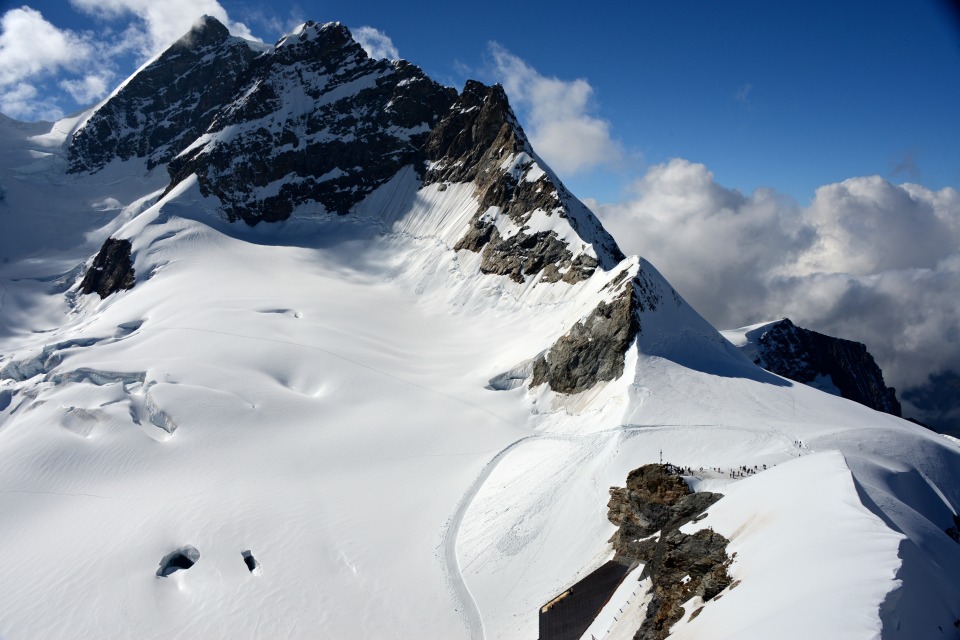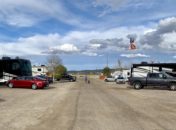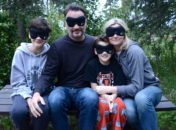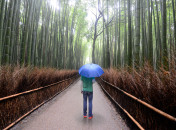BRITTANY TO BASEL…BARELY
There should be a Nobel Prize offered for travel coordination. After all, the underlying mechanics are complicated – factoring in distances, speed, language proficiency, transfers, pick-ups and drop-offs, petrol stations, transportation types, unusual Doritos flavors, metric system, taxi drivers and traffic. Plus there’s the stress of the unforeseen.
Our travel from Dinan, France to Basel, Switzerland was worthy of Nobel consideration.
Unforeseen Variable #1 – Wrong Train Station
Forty-five minutes before our train’s departure to Switzerland, we realized we were at the wrong train station. We were sitting at Gare du Nord but our train was leaving from Gare de Lyon on the other side of Paris. We immediately grabbed everything and rolled our way out to the cab line. I had half our stuff in the back of the cab before the driver even knew we were his next fare. I explained our situation in an urgent mess of English with pinches of “merci” and “s’il vous plait” thrown in.
Unforeseen Variable #2 – Traffic
It’s really not fair to call Paris traffic unforeseen – we just didn’t know we’d have to navigate it again. As we encountered our first batch of jammed cars, I watched enviously as motorbikes threaded through the mass. Our driver, who understood our concerns, kept saying to me, “Don’t worry. Only 20 minute. All okay.” But it was a Swiss train we had to make – Swiss! – so it was sure to depart on time. Plus it was the only time of our three months in Europe that we had someone waiting for us at the other end. If we missed it, we’d screw up a school/work night for our friends in Basel.
Unforeseen Variable #3 – The Bee
While we were stuck in traffic, a bee flew in the taxi window and stung our driver…right in the eye. A true professional, he calmly pulled out a tissue and collected the bee as it struggled to separate from its stuck barb. “Only 20 minute,” he said. “Don’t worry.” But when he turned toward me, I could see his eye was swelling fast. Drivers need eyes, so we were now on another timetable – how soon until his eye closed? The clock showed 20 minutes until departure and we had no idea which platform or how far we’d have to hustle through the station. After an illegal u-turn and series of honks, our hero dropped us just outside the entrance. When I paid and thanked him, his eye was swollen shut. “See,” he said. “All okay.”
We made the train. Three hours later we were warmly welcomed by our friends Mike and Jennifer, who delivered us to their house and shared a wonderful home-cooked meal.
THREE CITIES
We stayed in three Swiss cities – Basel, Wengen and Haute-Nendaz. Each provided a great hub for visiting other countryside towns.
BASEL
Basel is located where the Swiss, German and French borders meet so has a uniquely diverse culture. We had two days to see our friends, explore the area and relax a bit. We didn’t worry about jamming in too much, as we’d reconnect with Mike and Jennifer’s family about a week later when their kids Jack and Sam were on a school break.
For lunch one day we drove to the village of Eguisheim, France – sort of a hybrid of Napa, California and Dinan, France. Eguisheim was named as Le Village Préféré des Français in 2013 and is home to very good Alsace wines. Throughout the village, water pours from spigots into ponderous stone basins marked as potable or non. Ronan found one that didn’t say either and took a long draught of cool water from a spigot dripping with an algae beard. I was convinced that he would be sick later, but his iron gut prevailed.
The next day Ronan and I joined Mike to exercise the dogs, scooping up hazelnuts and walnuts as snacks while we walked. Angela and Asher took the tram into town to get haircuts, and after they were done Mike gave us a tour of Basel. We saw first-hand how expensive things can be in Switzerland – three salami sandwiches and three Cokes at the food court cost $35. We walked the town as we ate, learning about churches, squares, the Danube and the markets. Mike was an awesome guide whose quick pace made it both educational and a workout.
WENGEN
Trains are serious business in Switzerland (actually, everything is serious business in Switzerland). The trains and trams run exactly on time, are clean and well-maintained, and the ticket-takers are polite but matter-of-fact. Our trip from Basel to Wengen put us on a high-speed intercity train to Interlaken Ost; there we got on a smaller train to Lauterbrunnen with a final transfer onto a mountain-goat train riding on gears to the high village of Wengen. Wengen is one of the many villages in Switzerland that doesn’t allow cars, so our rental-company hostess Rachel loaded our bags onto an ATV and delivered them for us. On the walk to our flat we stopped by the COOP and got food provisions for the next few days.
Traveling full-time has given us an amazing opportunity to focus on family meals. Whether making dinner in an apartment, assembling PB&J sandwiches in the back of a rental car or going to a local café, we eat all our meals together. In Wengen we cooked dinner at “home” every night, and afterwards sat together doing schoolwork, playing cards or reading aloud.
ALPINE MINI-GOLF
After one particularly intense day of school, the four of us walked to town to play miniature golf for “recess.” It was one hell of a course too, with challenging skiing- or ice hockey-themed alternatives to the traditional windmill obstacles. The round was competitive and close in the end.
HIKES – OR, AS THE SWISS SAY, WANDERNS
Switzerland is known as a hiker’s paradise, and there were hundreds of possible treks outside our door in Wengen. At the end of a school day we walked to town and took the aerial cableway to Mannlichen, 1,100 meters above our flat. It was a quick (15 minute) but expensive (around $90 before our Swiss half-fare card) ride to the top. Near the apex the car ascends at a 75° angle and feels more like being in a glass elevator than a gondola. Our hike at the top was a bit rushed, as a storm was rolling in from the northwest that looked to dump loads of cold rain. Still, we walked to the Mannlichen summit and enjoyed the views across the Bernese Oberland and down into the Lauterbrunnen Valley until a frosty wind indicated that the weather was about to turn.
Another day we took two trains and a gondola to the town of Mürren on the other side of the Lauterbrunnen Valley. After exploring the picturesque town (Swiss cows wearing bells!) we hiked downhill along the railway to Winteregg. The weather was perfect and we enjoyed a hearty outdoor lunch – I had an enormous plate of rösti with bacon, cheese and eggs and a huge stein of beer – while the boys played on a trampoline and tightrope in the grass. After lunch we trekked further to Grutschalp and then broke into two groups – Angela, Ronan and Asher took the cableway down while I hiked to the valley floor. The trail was extremely steep, falling about 700 meters over a series of technical switchbacks. The estimated time was an hour, but I made it in about 35 minutes, mostly due to gravity.
TOP OF EUROPE
Jungfraujoch is a complex that rests in a col between the peaks of Jungfrau and Mönch at an altitude of 3,466m. It sits at the head of the Aletsch Glacier, the largest glacier in the Alps.
Getting there requires a long journey. From Kleine Scheidegg above Wengen, we transferred to a second train and then stopped again outside the mountain at Eigergletscher. While there we witnessed an enormous chunk of ice calve off the glacier and plummet thousands of feet down. It sounded like a low-flying jet echoing across the valley. The rest of the rail journey was inside the cold recesses of the Eiger and Mönch mountains. Even the final station at Jungfraujoch was 100 feet beneath the surface.
We spent the afternoon atop the Alps, wandering through the complex and out to observation decks. The tour took us to the highest point at Jungfraujoch (The Sphinx) and down to the lowest point through the glacial ice.
HAUTE-NENDAZ
We’d rented a ski chalet just outside the village of Haute-Nendaz in the canton of Valais, about 15 km up the side of the mountains above Sion. The Canton of Valais is known for its contrasts. The weather is both very dry (in its central Rhone Valley) and very wet (among its high alpine peaks). It is Swiss but the overall feel of the region, especially in the lower valleys covered by vast vineyards, is almost Tuscan. The predominant language is French and everywhere we went – even the Mexican restaurant in downtown Sion – locals greeted us in French. Menus and signs also were in French, not Swiss German.
The terrain in Haute-Nendaz is steep, and many of the houses on the high side of the roads are on stilts, while the houses on the low side often have the car park on the roof. Our rental was just off the main road and down a narrow gravel driveway that was so steep you couldn’t stop once you started (either up or down) or gravity would take over. The house sat on a leveled area looking across the broad valley 3,000 feet below.
Katherine, the property manager, showed us through the apartment to get us situated. She was extremely sweet and warm – patiently giving us incredible detail about how everything worked. The only problem was that she spoke no English. None. Not even a little bit. We were lucky that we’d spent almost three weeks in France and could pick out a few words, and lots of hand gesturing got us the rest of the way.
Here we met our friends from Basel for some relaxation – family meals, sight-seeing and hikes. On our first day we did an 8-mile trek along one of the many bisses (irrigation streams) that run through this part of the Alps, stopping midway at Planchouet for ice cream and beers. The trails are maintained and marked well, and local artists have decorated them with trolls, wolves, bears and foxes carved from the stumps of dead trees. The paths cross farms and skirt roads and houses, and people operate little stores out of the back of their barns catering to hikers who pass through.
MATTERHORN
We took advantage of the cool, sunny weather for an outing to Zermatt, home of the famous Matterhorn. Driving first to Tasch, we left the cars and took a train the rest of the way into car-free Zermatt. Stopping briefly in town for a lunch of street brats and beer, we then caught the famous Gornergrat train for the peak.
As our train rose higher up the mountain toward the Gornergrat complex at 3,135 meters, it became evident that despite the clear air around us, Matterhorn was buried in impenetrable clouds. We had hoped to catch a glimpse when they parted but we never saw anything more than an edge. The 360° views were otherwise amazing – two major glaciers swirled through the adjoining valleys and more than fifteen 4,000-meter peaks were visible across the horizon. We saw everything we could have wanted…except for the star attraction, Matterhorn!
The rest of our stay was spent cooking, reading, playing games and enjoying the scenery. It was wonderful to spend time with friends and we were sad to leave Switzerland, but our time in Haute-Nendaz had rejuvenated us for some busy travel days ahead.
CLICK ANY PHOTO TO OPEN THE GALLERY.









































































































































































